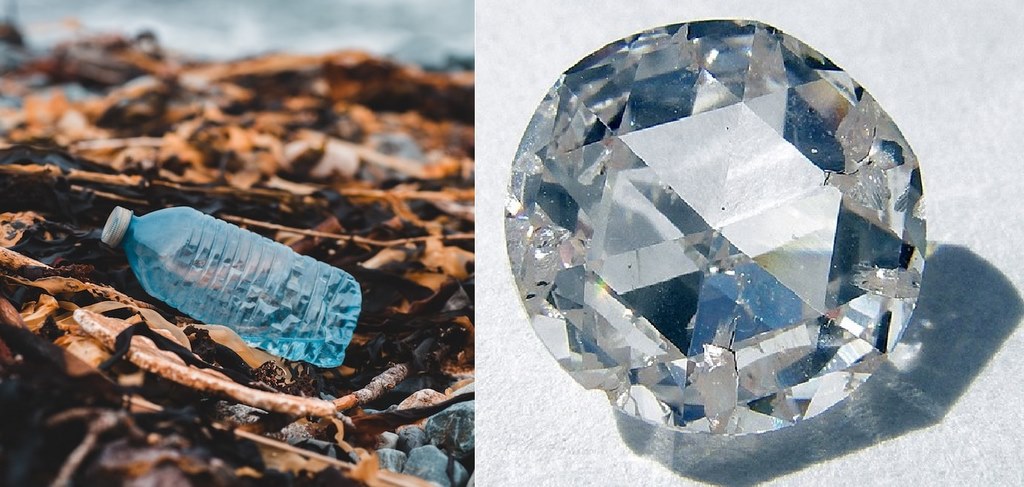
A thin film of plastic was, for the first time ever, turned into tiny diamonds in the blink of an eye after being shot at with a laser beam.
Synthetic diamonds are valuable for their hardness and are used to make high-quality cutting and polishing tools, but equally so for their thermal conductivity, and electrical insulation.
Opening up synthetic diamond production from plastic could lead to more demand for water bottles and other containers which often end up in the sea.
The breakthrough also has implications for planetary science, and the researchers who managed this philosopher’s stone-like transformation said it sheds light on what goes on inside the ice giants Neptune and Uranus.
How exactly was something that costs pennies turned into the hardest and one of the rarest minerals on Earth?
At their fundamental level, diamonds are simply a solid form of carbon, arranged in a particular crystalline structure alongside hydrogen and oxygen.
In tests, a sheet of PET (polyethylene terephthalate) plastic used for packaging food and beverages was heated by a laser beam up to 6,000°C. PET is made of petroleum, which is known in the industry as a “hydrocarbon.”
The test compressed the plastic under a weight equal to millions of times Earth’s atmospheric pressure for a few billionths of a second. This incredible experience reconfigured the molecules of the plastic into a nanodiamond.
“So far, diamonds of this kind have mainly been produced by detonating explosives,” said Professor Dominik Kraus, of the University of Rostock, Germany, and a co-author of the study. “With the help of laser flashes, they could be manufactured much more cleanly in the future.”
CHECK OUT: Huge Black Diamond Sold for $4.3 Million–and No One Knows Where it Came From or How it Was Formed
The laser fired ten flashes at the plastic film, after which the nanodiamonds formed and dropped in a collecting tank filled with water. There they are decelerated and can then be filtered and gathered.
“Up to now, we used hydrocarbon films for these kinds of experiments. And we discovered that this extreme pressure produced tiny diamonds,” Krauss explained. “PET has a good balance between carbon, hydrogen and oxygen to simulate the activity in ice planets.”
Proving it can be done with plastic takes the concept to an entirely new level of convenience for production on Earth, as well as reveals how nanodiamonds might form in large quantities on ice giants like Neptune and Uranus.
Ice giants contain carbon, hydrogen and vast amounts of oxygen. The new study published in Science Advances confirmed it really does rain diamonds inside ice giants at the solar system’s edge.
“The effect of the oxygen was to accelerate the splitting of the carbon and hydrogen and thus encourage the formation of nanodiamonds. It meant the carbon atoms could combine more easily and form diamonds.”
KEEP READING: Locals Digging a Well Accidentally Discover a $140 Million Star Sapphire Weighing Half a Ton
Temperatures in the interior of Neptune and Uranus reach several thousand degrees Celsius and the pressure is millions of times greater than Earth’s atmosphere. Above, the outer atmosphere of gasses is one of the coldest places in the solar system.
This creates storms that produce hailstones of diamonds. Scientists believed this was the case for 40 years, and recent studies have further reinforced this hypothesis.
TRANSFORM Your Friends’ Days With This Amazing Science On Social Media…




















Ah, the ancient Alchemists’ dreams coming true! Turning worthless stuff into valuable jewels!